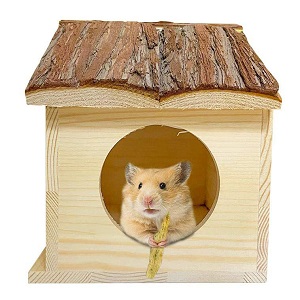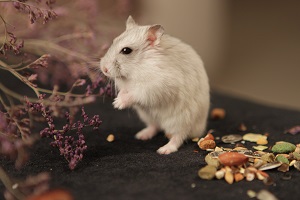Decorating your hamster’s cage goes beyond aesthetics – it plays a crucial role in creating a comfortable, engaging, and stimulating environment for your furry friend. A well-decorated cage enhances your hamster’s well-being, encourages natural behavior, and fosters a strong bond between you and your pet.

Steps
Here are some valuable tips on how to decorate a hamster cage effectively. you can follow these steps to decorate your hamster cage.
Choose Safe and Appropriate Decor
Prioritize safety by selecting decorations made from hamster-friendly materials. Avoid items with sharp edges, small parts, or toxic paints. Opt for natural materials like wood, cardboard, and safe fabrics.
Provide Hiding Spots
Hamsters appreciate hideouts where they can retreat for privacy and security. Use small tunnels, wooden houses, or coconut huts to create cozy hideaway spots within the cage.
Incorporate Climbing Structures
Hamsters love to climb, so consider adding platforms, ladders, and climbing toys. These structures not only provide exercise but also satisfy their natural instincts.
Offer a Variety of Toys
Rotate and diversify toys to keep your hamster mentally engaged. Include chew toys, tunnels, exercise wheels, and puzzle toys to prevent boredom and encourage exploration.
Enrich with Foraging Opportunities
Scatter food treats throughout the cage or use foraging toys to mimic natural scavenging behavior. This engages your hamster’s mind and adds excitement to their daily routine.
Use Bedding Wisely
Bedding isn’t just for comfort – it’s also a potential enrichment tool. Create shallow bedding areas for digging and burrowing activities. Provide nesting materials like paper strips for building cozy nests.
Add Hammocks and Swings
Hammocks and mini swings provide a relaxing space for your hamster to rest or play. Ensure they are securely attached and not too high to avoid accidents.
Create Multi-Level Setups
If your cage allows, design a multi-level setup with ramps and platforms. This not only maximizes space but also adds complexity to the environment, promoting exploration.
Consider Natural Elements
Incorporate natural elements like branches, rocks, and untreated wood. These materials provide texture and opportunities for climbing, chewing, and exploring.
Provide Visual Stimulation
Hamsters are naturally curious. Hang colorful and safe decorations like hammocks, tunnels, and hanging toys to pique their interest.
Avoid Overcrowding
While decorations are essential, avoid overcrowding the cage. Hamsters still need space to move around comfortably. Strike a balance between enrichment and open space.
Regularly Rotate Decor
To prevent habituation and keep your hamster engaged, rotate toys and decorations every week or so. Introducing new items can spark curiosity and excitement.
Monitor Chewing Behavior
Hamsters love to chew, and some items may be gnawed on. Ensure decorations are non-toxic and won’t harm your hamster if ingested.
Personalize the Cage
Customize the cage with your hamster’s name or decorations that reflect its personality. This adds a personal touch and makes the cage a unique space.

Conclusion
Remember, the key to decorating a hamster cage is to create a harmonious blend of comfort, safety, and enrichment. Observe your hamster’s preferences and behaviors to fine-tune the decorations.
A thoughtfully decorated cage will enhance your hamster’s quality of life and provide you with hours of enjoyment as you watch your pet explore and interact with its enriching environment.

